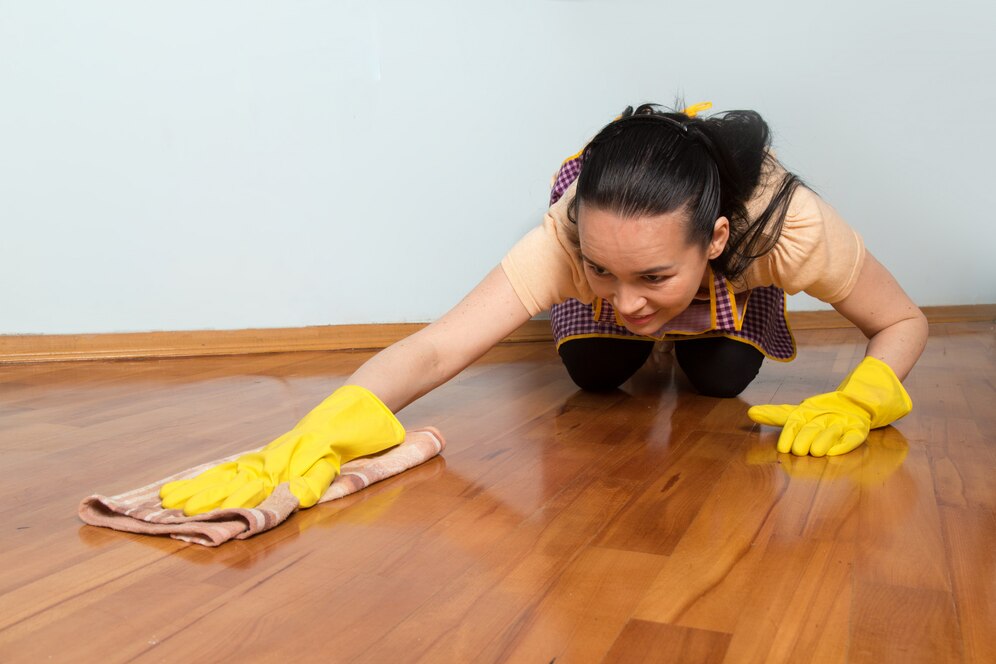When it comes to cleaning surfaces, soap and water are often the go-to solution. However, when dealing with wood floors, using anything beyond a damp cloth can lead to damage. Wood, when exposed to excess moisture, can expand, crack, splinter, and warp.
To properly care for your wood floor, it\’s crucial to identify the type of wood flooring installed in your home. This knowledge allows for confident cleaning methods, ensuring your floor maintains its beauty and durability for years to come.
- Identify Your Floor Type Wood floors typically fall into four categories:
- Surface-sealed wood floors: These are sealed with polyacrylic, urethane, or polyurethane, providing resistance to stains and water.
- Penetrating-seal-treated and oil-treated wood floors: Featuring seals that penetrate the wood grain and harden, requiring liquid or paste wax for maintenance.
- Lacquered, shellacked, and varnished wood floors: These are less resistant to stains and water compared to surface-sealed floors.
- Untreated wood floors: If unsure, consult manufacturer instructions, conduct a smudge test, or seek professional inspection.
- Stay Vigilant Against Dirt Regardless of floor type, regular cleaning is essential to prevent dirt, dust, and food particles from scratching or damaging the finish. Utilize a dry microfiber mop or soft-bristle broom daily, supplemented by a vacuum without a beater bar at least once a week.
- Follow Manufacturer Recommendations Strategically placing area rugs and runners in high-traffic areas can minimize cleaning frequency. However, periodic damp cloth cleaning may be necessary. Follow manufacturer-recommended cleaning products and instructions to maintain warranty validity.
- Cleaning Procedure Once armed with the appropriate cleaning product:
- Dip a mop into a bucket with the cleaning solution, ensuring thorough wringing to avoid excess moisture.
- Mop along the wood grain direction.
- Replace the cleaning solution when dirty, continuing until the entire floor is cleaned.
- Finish by going over the floor with a damp rag, ensuring moisture is minimal.
- Tackle Tough Stains For scuff marks, use baking soda on a damp sponge. For tougher stains like glue or tar:
- Apply a small amount of peanut butter to the stain and let it sit to break down residue.
- Use ice cubes wrapped in a rag to freeze the residue, making it easier to lift.
By following these steps, you can effectively clean and maintain your wood floors, preserving their appearance and longevity.

